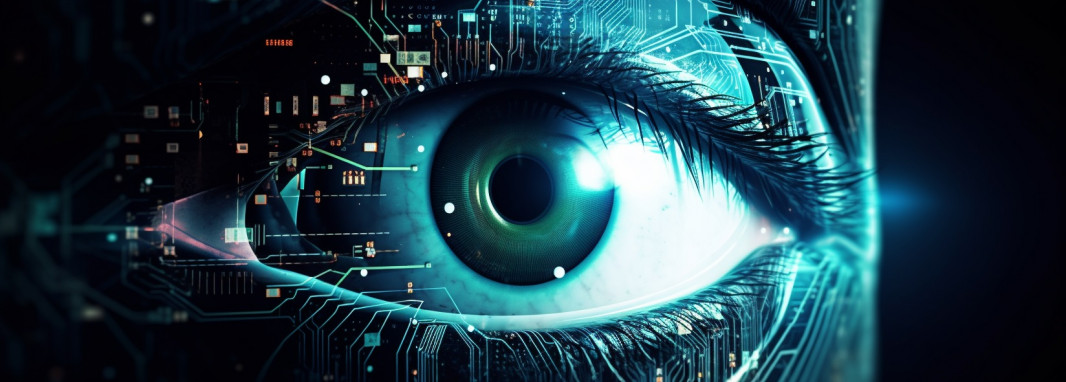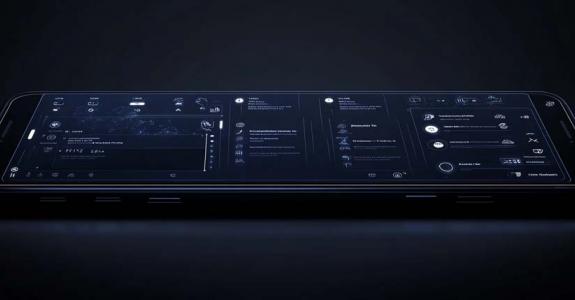In today's swiftly advancing digital era, the capability of machines to analyze and comprehend the visual environment around us is not only captivating; it's progressively becoming a fundamental aspect of our interaction with technology.
This is where computer vision, a field at the exciting intersection of artificial intelligence (AI) and image processing, comes into play. Computer vision is the technology that enables computers to extract and process complex information from digital images or videos, achieving an advanced level of understanding.
It's akin to imparting a sense of sight to a machine, enabling it to identify patterns, objects, and actions within visual data.
The importance of computer vision in today's technological landscape cannot be overstated. It extends far beyond the capability of capturing and processing images.
At its core, it's about enabling machines to analyze and interpret visual data in a way that mimics human vision but with the added advantages of speed, accuracy, and tirelessness.
This technology is rapidly becoming a cornerstone in numerous applications, transforming industries by providing them with more intelligent, automated, and sophisticated capabilities.
From security systems that can identify potential threats to medical imaging software that assists in the early diagnosis of diseases, computer vision applications are vast and varied.
In the retail sector, it's revolutionizing customer experiences through personalized shopping and inventory management. In agriculture, it's used for monitoring crop health and optimizing yields. These examples barely scratch the surface of computer vision's potential.
As we delve deeper into this article, we invite you to explore how computer vision shapes industries, enhances capabilities, and sets the stage for future innovations.
The journey through the realms of computer vision will not only enlighten you about its current applications and benefits but also offer a glimpse into what the future holds in this dynamic field.
Prepare to be amazed by the transformative power of computer vision, a true testament to the advancements in AI and machine learning.
What is Computer Vision?

Computer vision is a branch of artificial intelligence that empowers computers and systems to extract valuable insights from digital images, videos, and other visual sources, enabling them to respond or make suggestions based on this data.
This technology equips computers with the capability to process and comprehend visual information like human vision, yet with enhanced speed and precision.
The historical development of computer vision dates back to the 1960s and 1970s when the first algorithms were created to detect basic patterns in images.
However, it was the advent of machine learning and neural networks that really propelled the field forward.
In the early 2000s, with the increase in computational power and data availability, these algorithms became more sophisticated, leading to significant advancements in object detection, image classification, and real-time video metrics analysis.
By 2024, computer vision will be further refined, benefiting from deep learning technologies that enable systems to learn from a vast array of visual data, improving accuracy and expanding capabilities in complex environments.
Key technologies and algorithms that power computer vision include convolutional neural networks (CNNs), which are especially effective for image and video recognition, and recurrent neural networks (RNNs), used for understanding temporal dynamics in videos. Other essential technologies include edge detection algorithms, pattern recognition techniques, and deep learning models trained on massive datasets to recognize a vast range of objects and scenarios.
To illustrate how computer vision works in everyday life, consider the following examples:
- Facial Recognition: Employed in devices like smartphones and security setups, this technology discerns and confirms an individual's identity using a digital image by examining and matching patterns derived from the person's facial features.
- Autonomous Vehicles: Cars equipped with computer vision can interpret and navigate the traffic environment, detecting objects like pedestrians, other vehicles, and traffic signs, enabling safe and autonomous driving.
- Medical Imaging Analysis: In healthcare, computer vision algorithms can analyze X-rays, MRIs, and CT scans to assist doctors in diagnosing diseases by identifying abnormalities such as tumors.
- Retail Checkouts: Some stores use computer vision for automated checkouts, where the system recognizes the items in a cart, eliminating the need for manual barcode scanning.
These examples demonstrate the practical applications of computer vision, showcasing its ability to see, understand, and interact with the world in a way that was once the exclusive domain of human sight.
As we progress further, the possibilities and advancements in this field continue to expand, making computer vision a pivotal technology in modern AI solutions.
Benefits of Computer Vision
Computer vision technology has revolutionized how machines interact with the visual world, bringing numerous benefits across various sectors.
Its accuracy, efficiency, automation capabilities and contributions to safety and data analytics mark a significant leap in technological advancement.
Accuracy and Efficiency in Processing Visual Data
One of the most significant benefits of computer vision is its ability to process and analyze visual data with remarkable accuracy and efficiency.
Unlike human vision, which can be subjective and prone to errors, computer vision provides consistent and reliable interpretations of visual data.
This aspect is especially critical in precision-demanding tasks, like identifying flaws in manufacturing processes or interpreting medical imaging, where accuracy is paramount.
Computer vision systems can scan an image or a corporate video far more quickly than humans, processing vast amounts of visual information in a fraction of the time, leading to faster decision-making and operational efficiency.
Automation Capabilities in Various Sectors
Computer vision enables a high degree of automation in numerous industries, transforming traditional processes into more efficient, modern systems.
For example, computer vision technology automates inventory management in the retail sector, reducing manual labor and errors. In agriculture, drones equipped with computer vision can monitor crop health and detect pests, automating and improving farming practices. This form of automation not only conserves time and reduces expenses but also frees up human workers to concentrate on more intricate tasks, thereby enhancing overall productivity.
Enhancements in Safety and Security Measures
Safety and security are other areas where computer vision technology shines. In public safety, surveillance systems equipped with computer vision can detect unusual activities or behaviors, aiding in crime prevention and response. In industrial sites, drones, equipped with non-destructive testing, can examine materials and detect wear and tear and other irregularities.
In the workplace, computer vision can monitor safety compliance, identify potential hazards, and reduce the risk of accidents. The ability of these systems to provide real-time monitoring and alerting significantly enhances safety measures in various environments.
Contribution to Data Analytics and Decision-Making Processes
Computer vision also plays a pivotal role in data analytics and decision-making. Analyzing visual data provides insights that were previously inaccessible or difficult to obtain.
For instance, in market research, computer vision can analyze consumer behavior through facial expressions and body language, providing valuable data for marketing strategies.
Analyzing traffic patterns and pedestrian movements in urban planning can inform better infrastructure development. These insights contribute to more informed, data-driven decision-making across various fields.
Additionally, AI applications play a crucial role in optimizing efficiency and productivity in industries such as the industrial robot market, enabling advanced automation and process improvement.
In summary, computer vision offers many benefits, from improved accuracy and efficiency in data processing to advanced automation and enhanced safety measures.
Its contribution to data analytics further underscores its role as a transformative technology, paving the way for more intelligent, more informed decision-making in various industries.
As we continue to advance in the realm of AI, the capabilities and applications of computer vision are set to expand even further, marking a new era of technological innovation.
Industries and Businesses Leveraging Computer Vision
As we move through 2024, the impact of computer vision across various industries is undeniable.
This technology is more than just a vision of the future; it's a tangible reality of the present, boosting operational efficiency, enriching customer experiences, and driving substantial progress across various industries.
Retail: Inventory Management and Customer Experience
In the retail industry, computer vision is revolutionizing both back-end operations and front-end customer experiences. For inventory management, computer vision systems efficiently track stock levels, reducing errors and saving time in inventory audits.
These systems can instantly recognize when a product is running low and needs restocking on the customer front; computer vision aids in providing a personalized shopping experience.
For example, technologies like intelligent mirrors and virtual try-on systems employ computer vision to enable customers to visualize how clothing items would appear on them, bypassing the need for physical try-on.
This not only elevates the shopping experience but also encourages increased sales.
Healthcare: Diagnostic Imaging and Patient Monitoring
The healthcare sector has seen transformative changes with the adoption of computer vision, especially in diagnostic imaging and patient monitoring.
Sophisticated algorithms are utilized to scrutinize medical images with greater precision, including X-rays, MRIs, and CT scans. This enhanced analysis aids in the early detection of diseases, such as cancer, facilitating timely intervention and treatment.
This not only improves diagnostic accuracy but also expedites the treatment process. In patient monitoring, computer vision systems can track patients' movements and vital signs, alerting staff to any unusual or concerning activity, thereby enhancing patient care and safety.
Automotive: Autonomous Vehicles and Safety Features
The automotive industry is at the forefront of incorporating computer vision, particularly in developing autonomous vehicles. These vehicles rely on computer vision to navigate roads, detect obstacles, and make split-second decisions, which are crucial for safety. Additionally, modern cars are increasingly equipped with sophisticated driver-assistance features like lane departure warnings and collision avoidance systems. These features are driven by computer vision technologies, significantly enhancing road safety and driving experience.
Manufacturing: Quality Control and Automation
In manufacturing, computer vision has become pivotal in ensuring quality control and driving automation. By examining images of products on the assembly line, computer vision systems can detect any defects or variations from the norm.
This process ensures the uniformity and high quality of the products being manufactured. This automation increases efficiency and reduces the need for manual inspections, lowering costs and improving throughput.
Agriculture: Crop Monitoring and Yield Prediction
Computer vision is also making significant inroads in agriculture. It enables precise monitoring of crop health, pest infestation, and growth patterns through aerial images captured by drones or satellites.
This data aids farmers in making well-informed decisions regarding irrigation, fertilization, and pest control strategies. Such informed decision-making contributes to more accurate yield predictions and more efficient management of farm operations.
Security and Surveillance
Computer vision has established itself as an essential technology within security and surveillance. Surveillance cameras with computer vision algorithms can detect suspicious activities or individuals in real-time, enhancing public safety and security.
This technology is also used for crowd monitoring during significant events, ensuring crowd management and emergency response readiness.
In conclusion, computer vision applications are vast and varied across multiple industries. Computer vision is a cornerstone of innovation and improvement, from revolutionizing retail and healthcare to advancing automotive safety and manufacturing efficiency.
As we look to the future, the potential for computer vision to further transform these industries is immense, promising even more sophisticated and intelligent applications.
The Future of Computer Vision
As we stand in 2024, the future of computer vision is not just promising; it's teeming with potential for groundbreaking innovations and transformative applications. Over the next decade, this field will evolve rapidly, driven by technological advancements and increasing integration with various sectors.
Predictions and Trends for the Next Decade
The future trends in computer vision point towards even more sophisticated and seamless integration into daily life and industrial operations. We anticipate significant advancements in real-time processing and edge computing, allowing faster and more efficient image and video analysis.
The usage of augmented reality (AR) and virtual reality (VR) is expected to grow significantly, with computer vision being essential in seamlessly blending digital elements into our physical surroundings.
In healthcare, we plan to use more advanced diagnostic tools powered by computer vision, potentially capable of identifying diseases at stages previously undetectable. Furthermore, the proliferation of autonomous vehicles and smart city technologies will rely heavily on advanced computer vision capabilities.
Integration with Other AI Technologies
Computer vision is expected to become more closely integrated with other AI technologies, such as natural language processing (NLP) and machine learning, enhancing its capabilities and applications.
This integration is anticipated to result in more intuitive and intelligent systems capable of comprehending and interacting with their surroundings in ways that more closely resemble human behavior.
For example, combining computer vision and NLP could enable more advanced human-computer interactions, where machines understand visual cues and spoken language, significantly enhancing user experience and accessibility.
Ethical Considerations and Privacy Concerns
As computer vision technologies become more pervasive, ethical considerations and privacy concerns are increasingly emerging. The application of facial recognition and surveillance technologies brings substantial problems regarding privacy to the forefront.
The future development of computer vision must include stringent ethical guidelines and privacy-preserving techniques, such as anonymizing personal data and strict regulations on using surveillance technologies.
Potential Challenges and Areas for Further Research
Despite its promising future, computer vision faces several challenges. One of the primary challenges is the need for large, diverse datasets to train algorithms, which must be free from biases to ensure fairness and accuracy.
Additionally, there is a continuous need for improvements in algorithm efficiency and the ability to process complex visual data in varying conditions. Another area for further research is the development of low-power computer vision technologies for use in mobile and edge devices, making these applications more sustainable and widely accessible.
In conclusion, the future of computer vision is a landscape ripe with opportunities for innovation, integration, and improvement. As we venture further into the decade, the field is expected to confront its challenges head-on, paving the way for more ethical, efficient, and impactful applications that could redefine how we interact with technology.
How Businesses Can Adopt Computer Vision
As we progress through 2024, integrating computer vision into business operations is not just a competitive edge but a necessity for staying relevant in an increasingly tech-driven market. Here's how businesses can adopt this transformative technology:
Identifying the Need for Computer Vision in Business Operations
The first step for any business considering computer vision is identifying areas where this technology can add value. This could range from enhancing product quality in manufacturing to improving customer engagement in retail.
Companies must analyze their operations, pinpoint inefficiencies or areas that could benefit from automation, and determine how computer vision can address these challenges.
It's also vital to consider the data that will be used and how computer vision can help extract actionable insights from this data.
Steps for Implementation and Integration
Once the need for computer vision is established, the next step is planning its implementation. This process typically involves:
- Data Collection: Gathering the necessary visual data that the computer vision system will process.
- Choosing a Model: Depending on the application, businesses might opt for pre-built computer vision models or develop custom models.
- Training and Testing: This involves training data into the model, followed by testing to ensure accuracy and reliability.
- Integration: Integrating the computer vision system into existing business processes and IT infrastructure.
Choosing the Right Tools and Partners for Computer Vision Solutions
Selecting the appropriate tools and partners is crucial for successfully adopting computer vision. Businesses should look for scalable, reliable, and compatible tools with their current systems.
It's also essential to choose partners or vendors with proven expertise in AI and computer vision. These partners can provide valuable guidance, from selecting suitable algorithms and models to navigating data privacy concerns.
Case Studies of Successful Computer Vision Adoption
Several companies have successfully integrated computer vision into their operations. For example, Amazon Go stores use computer vision in retail for a checkout-free shopping experience. In manufacturing, BMW has implemented computer vision for quality control in its assembly lines. These cases demonstrate the tangible benefits of computer vision in enhancing efficiency, reducing costs, and improving customer satisfaction.
In conclusion, adopting computer vision in business requires a strategic approach, from identifying the need and planning implementation to choosing the right tools and learning from successful case studies.
For businesses looking to stay ahead in the digital era, investing in computer vision and related AI development services is not just an option; it's a critical step towards future-proofing their operations.
Conclusion
As we have explored, computer vision stands as a monumental achievement in artificial intelligence, bringing about a transformative impact across many industries.
Computer vision has proven its versatility and indispensability, from revolutionizing retail experiences and advancing healthcare diagnostics to driving the future of autonomous vehicles and enhancing manufacturing efficiency. Its ability to interpret and interact with the visual world mirrors human capabilities and, in many instances, surpasses them with greater accuracy, speed, and reliability.
The future of computer vision, brimming with possibilities, is ready to unveil even more groundbreaking applications, fundamentally transforming how businesses function and consumers engage with technology.
It is a beacon of technological advancement, guiding us toward a more automated, efficient, and data-driven future. This technology is not just about machines seeing; it's about them understanding and augmenting our world in ways we are just beginning to comprehend.
For businesses looking to harness the power of this groundbreaking technology, the journey begins with embracing AI development services.
By integrating computer vision into your operations, you can unlock new possibilities, drive innovation, and stay ahead in the competitive digital landscape. Discover our AI development services and begin your journey towards a more intelligent and efficient future powered by computer vision.






